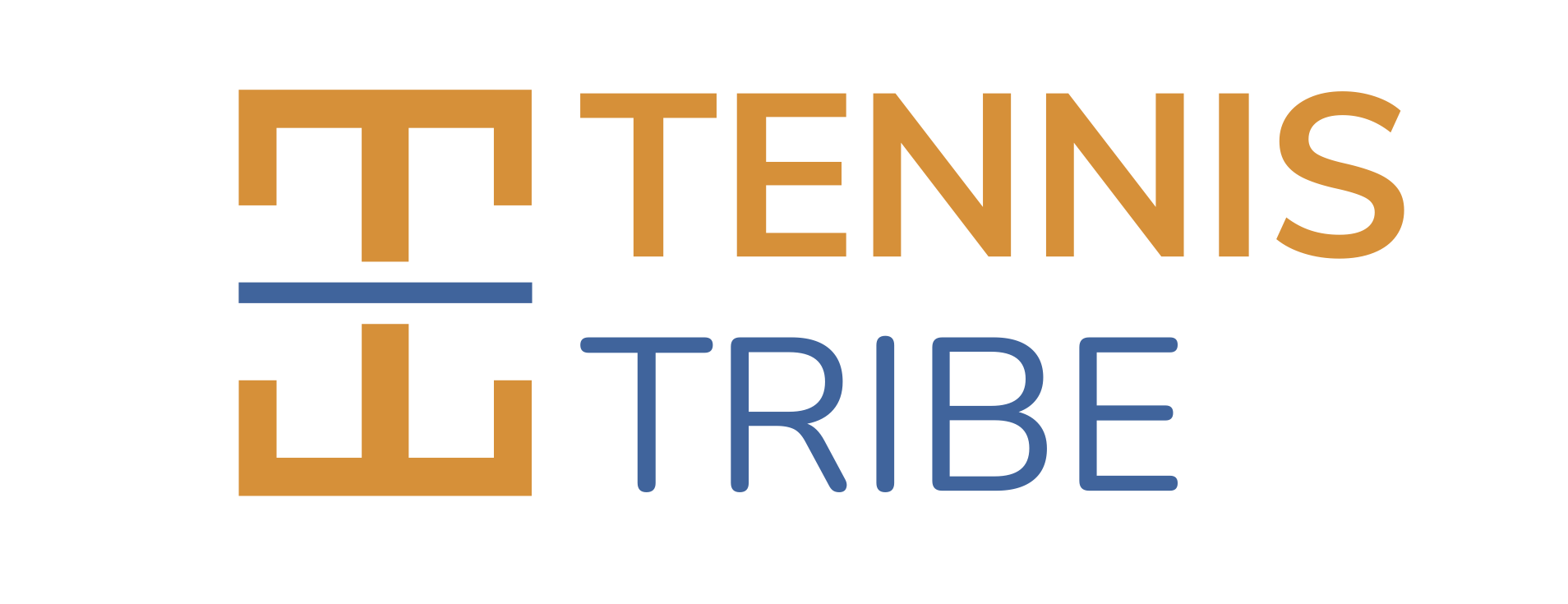When you buy a product through our links below, we may earn money from our affiliate partners to help support the site. However, this does not affect our evaluation or recommendation of each product. See our list of partners & how we get paid here. You can also learn our process for reviewing tennis gear here.
Choosing a tennis racquet is a big decision. You need to make sure you have the right racquet for your skill level now and one that will allow you to improve as a tennis player. Some players may need to find a racquet that helps with power, while others need more control.
In this complete guide, we will show you how to choose a tennis racquet for beginners, intermediate, or advanced skill level players. First, you’ll learn the general specifications of tennis racquets so you know what to look for. Then, you’ll discover the key questions you need to ask when picking a racquet.
Criteria for Choosing a Tennis Racquet
When considering the best tennis racquets, you have to find the right option for your age, skill level, and abilities.
At the end of this guide, you will have a clear picture of which type of racquet is right for you. When you start your search for a new tennis racquet, there are a few things to consider.
- Skill level: Your skill level, or tennis ability, will determine the type of racquet you need. Beginner racquets have bigger frames that help with power while more advanced racquets offer better control and come in smaller sizes.
- Athletic ability – strength, mobility, & hand-eye coordination: Your athletic ability will help determine how large and heavy of a racquet you should choose. Older players who have lost athleticicism may need something lightweight and larger, while a younger, fit player can choose a heavier, compact tennis racquet.
- Personal preferences: You’ll also want to decide what specifically you want from your racquet. If you play a lot of singles, for example, you may want a racquet that adds topspin to your groundstrokes. If, however, you play mostly doubles and like to go to the net, then you’ll want a racquet with more control for your volleys.
- Goals and budget: Your goals and budget also need to be considered. If you just want to try tennis out, then you may want a cheap racquet. However, if you’re starting to take lessons and want to improve your game, then it’s best to choose a higher quality racquet.
Below, we’ll navigate you through these criteria in more detail to help you decide the best tennis racquet for you.
How To Choose A Tennis Racquet Based On Skill Level
Knowing your skill level is the first step to finding the right racquet.
What is Your Skill Level or Tennis Ability?
For this guide, we will use the following scale.
Beginner
Just starting to learn tennis, I’ve never played, or I’ve only played a few times for fun. I’m thinking about getting more serious and am looking for a racquet to practice more. I might start taking lessons too.
Intermediate
I used to play as a kid some, but haven’t played in years, or I started playing a recently and want to take my game to the next level. I can hit the ball over the net with consistency, but I’m still working on my power and topspin. I can hit forehands and backhands, but I prefer one side to the other. I can serve consistently but don’t hit with a lot of power or spin.
Advanced
I play regularly. I can control shots with placement, spin, and power. I can serve with spin and power too. This would be 4.0 and higher on the USTA scale.
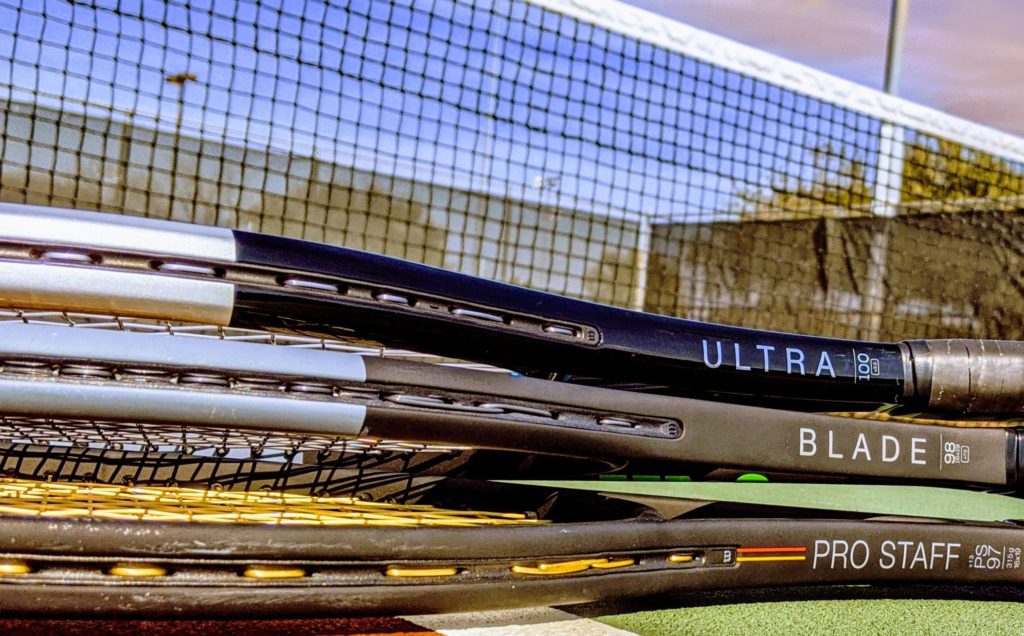
Tennis Racquet Specification Chart
Tennis racquets have made more technological developments than other tennis gear over the past 20 years. It can get confusing when you try to consider things like balance, swingweight, string pattern, and more. We’ve made it simple for you, with just the most important specifications below.
This chart will give you a high-level idea of what to look for in a racquet as you get better at tennis.
| Racquet Specifications | Beginner Players Only | Intermediate & Some Beginner | Advanced & Some Intermediate |
|---|---|---|---|
| Head Size (sq. inches) | 107 – 115 | 100 – 110 | 95 – 100 |
| Length (inches) | 27-28 | 27 – 27.5 | 27 – 27.5 |
| Weight (strung) | Under 11 Ounces | 10.1 – 11.5 Ounces | Over 11 Ounces |
| Price | Under $150 | $100 & up | $150 & up |
| Power vs Control | More Power | Balanced Racquet | More Control |
Stop paying full price for tennis gear! Get deals on shoes, racquets & more up to 70% off.
Characteristics of Tennis Racquets
There are several major factors to consider when choosing a racquet. To make it easy for you, we’ll go over key characteristics to look for when finding a racquet to fit your game.
Regular vs Oversized Racquets
You will hear racquet size called a number of different things – mid-sized, midplus, regular, standard, oversize, etc. Normal adult racquets are 27 inches long. Oversized racquets are over 27 inches, up to 28.5 inches. As the chart indicates above, more advanced players use smaller racquets, while the longer racquets are better for beginners. Read on to learn the advantages of each.
How to Choose a Grip Size
Tennis racquet grips are labeled from 1 – 5 based on their circumference. For most adults, a 4 ⅜ (3) grip size is best. If your hands are very small, then use a 4 ¼ grip, labeled 2. Use a 4 ½ grip (4) if you have larger than normal hands.
If you’re unsure on which size grip to use, choose the smaller grip and you can always add an extra tennis overgrip to make up the difference.
Racquet Weight
Most beginner racquets are lighter weight, under 10.5 ounces when strung. Tennis racquets for higher skill-level players are heavier, usually over 11 ounces. Racquets will either have labeled a strung weight or an unstrung weight somewhere on the frame. The difference, obviously, is the weight of the strings in the racquet.
- In general, lighter racquets will be easier to swing and maneuver making them better for beginners.
- Heavier tennis racquets are more stable and give you less chance of needing a tennis elbow brace. They can be harder on your shoulder when serving though.
Now that you know the primary factors for the tennis racquet, we need to look at your needs by analyzing the strengths and weaknesses of your tennis game to find the best racquet for you.
For more on finding your ideal racquet specifications, check out this diagram on how to find a perfect racquet from Midwest Sports.
Stop paying full price for tennis gear! Get deals on shoes, racquets & more up to 70% off.
What are Your Strengths and Weaknesses?
Before choosing a racquet, you need to know more than just your skill level. You also need to know what your strengths are as a tennis player.
If you are young and strong with a game based on power, for example, you may want a racquet with more control to counterbalance that.
Power vs Control
The rule of thumb for power is this – The bigger the racquet head, the more power you’ll be able to generate.
Racquets Built for Power
Most of the best tennis racquets for power fit these criteria.
- Head size of at least 100 square inches, depending on skill level.
- More weight in the head of the racquet.
- A thicker frame or beam.
- More open string patterns – 16×18 or 16×19. This will help add spin to your shots as well.
A longer tennis racquet can also add power by increasing the leverage on your strokes. Racquets that are 27.5 inches and longer will offer more power.
Here are three of the best racquets for power.
- Babolat Pure Drive – Great for all skill levels with lightweight and oversized versions for beginners.
- Head Extreme – Intermediate and advanced players who want more power and spin from the baseline.
- Wilson Ultra – Excellent option for beginner and intermediate players with several versions.
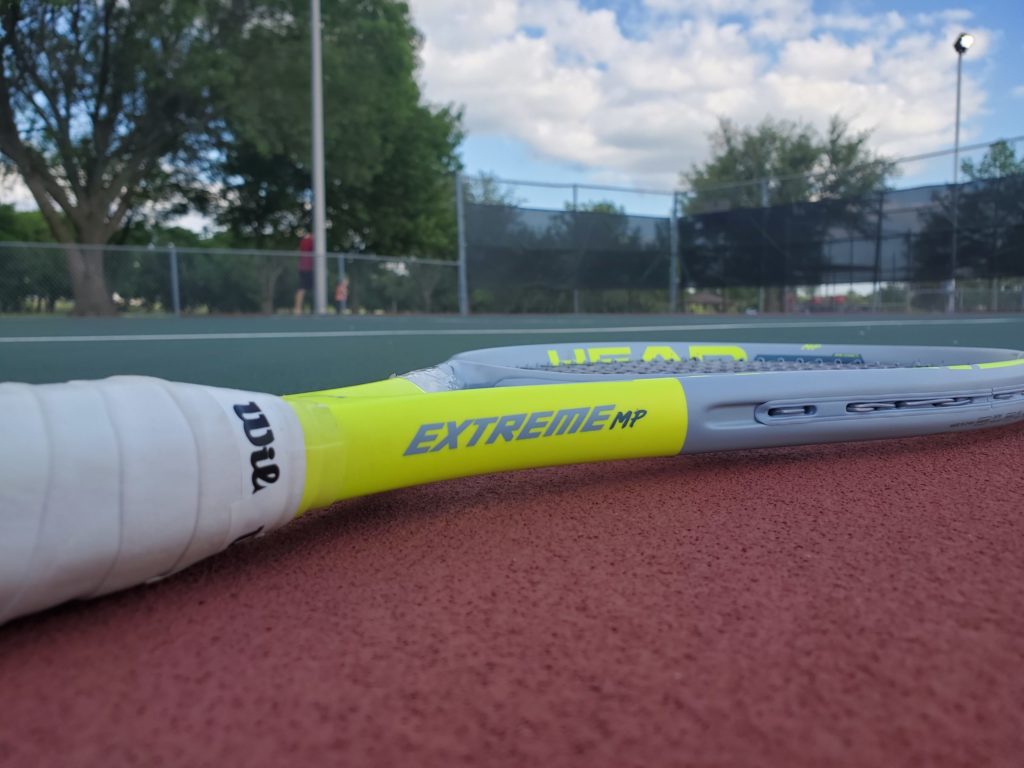
Racquets with More Control
For a more control-oriented racquet, look for these specifications.
- Under 100 square inch head size.
- A tighter string pattern (strings closer together) – 18×20, for example.
- Narrower frame width or beam.
Racquets built for control are usually 27 inches long.
Here are the three of the best racquets for control.
- Head Prestige – Advanced racquet offering precise control, great feel, and stability.
- Wilson Blade – Versions for any skill level. A very comfortable racquet used by many pro tennis players.
- Head Gravity – Good for intermediate to advanced players who want maximum control and feel.
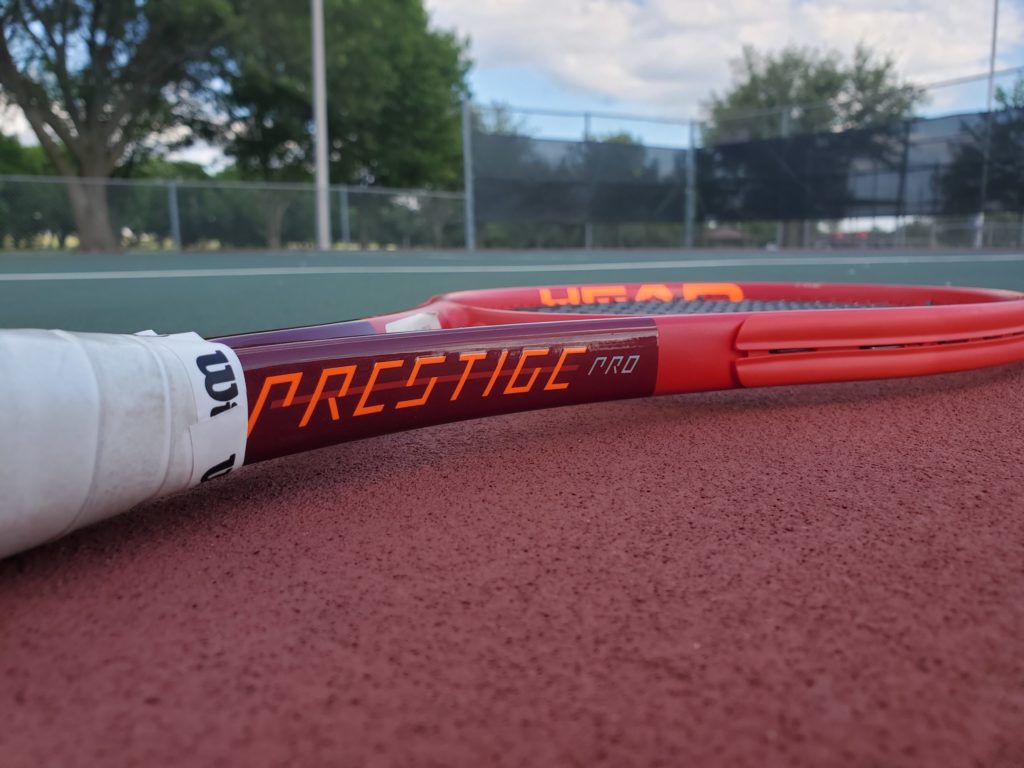
Baseline vs Net or Singles vs Doubles
If you play mostly singles and hit a lot of groundstrokes from the baseline, then you’re likely not playing at the net very much. This means you’ll have time to start your swing and won’t need a racquet with a lot of mobility.
In this case, a bigger racquet will help you generate the power and spin you need from the baseline. A bigger racquet head will also have a larger sweet spot. If you don’t practice for dozens of hours each week like the pros, you may need a bigger sweet spot because you won’t necessarily make contact in the same spot on the strings every time.
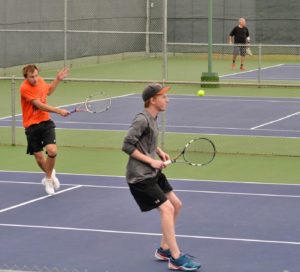
These racquets are great for singles players who hit groundstrokes from the baseline.
- Babolat Pure Drive – Best overall
- Head Speed – Balanced option
- Wilson Blade – Great comfort & spin
- Babolat Pure Aero – Best for power & spin
- Head Radical – Controlled power
If, however, you play a lot of doubles and need to be able to move quickly at the net with a racquet that you can control, use a normal racquet head (under 100 sq. inches). In this case, a smaller racquet will increase your versatility at the net to hit volleys. Since you have less time to react, this extra maneuverability is crucial. It will also give you more control on your volleys and allow for better placement.
Any racquets above are great choices for beginner or intermediate players who play doubles. The racquets below are great options for advanced doubles players who like to move to the net.
- Head Prestige – great control & feel on volleys (advanced racquet)
- Wilson Pro Staff – excellent stability & feel (advanced racquet)
At this point, you should have an idea of what specifications within a certain range you need to best suit your game. Next, we’ll cover the best racquets for specific types of players and what advantages these players need based on their level.
Quality vs Price
Tennis racquets can be expensive, but finding the right racquet is worth it if you’re serious about improving.
- If you plan to play several times per week and want to keep improving, choose a higher-quality racquet that will allow you to get better. These racquets will cost over $150 and often $250.
- If you only want to try tennis out and aren’t sure about your long term goals, there are options under $100 as well. Buy one of the best beginner racquets from a trusted brand like Wilson, Babolat, or Head.
How To Choose A Tennis Racquet for Beginners
Beginner tennis players who are thinking about taking the game a little more seriously will want to buy a racquet that allows for improvement. You’ll want something that is forgiving, with a big sweet spot. As you get better at tennis, you need a racquet that will be effective for intermediate players too.
Generally, beginner racquets have a head size over 100 square inches. If you do plan to become an intermediate or advanced player, we don’t recommend any racquet over 107 square inches.
Here is our list of top beginner racquets. Some of these racquets are also on the intermediate list as they are great for transition players trying to get better.
- Head TI S6 – Best Overall Beginner Tennis Racquet
- Babolat Pure Drive 110 – Best for Power
- Prince Ripstick 100 – Best for Serious Beginner
- Wilson Clash 108 – Best for Comfort (arm friendly)
- Head Boom Team – Best for Control
- Wilson Hyper Hammer 5.3
- Wilson Tour Slam – Best Cheap Racquet for Beginners
Stop paying full price for tennis gear! Get deals on shoes, racquets & more up to 70% off.
How To Choose A Tennis Racquet for Intermediate Players
For intermediate players who can hit the ball over with consistency, but may not be advanced to accurately control and spin your groundstrokes, you have to find a tennis racquet that is well balanced.
You don’t need as much power as you did when you were a beginner player since you have a more developed swing at this stage. Players also will want a game improvement racquet that will let them continue to become better.
Intermediate players shouldn’t use racquets more than 107 square inches if they plan to become more advanced. I have seen people as high as a 4.0 in USTA tournaments use racquets as large as 115 square inches. The problem is, they won’t be able to improve any more than that. They have reached their peak with that particular racquet.
Here are the top tennis racquets for intermediate players. We do have some racquets from our advanced and beginner lists as well if you are at a transition phase, or want to level up your game.
- Wilson Clash 100 – Best Overall Intermediate Racquet
- Head Extreme MP – Best for Power
- Prince ATS Textreme Tour 100P – Best for Control
- Yonex Ezone 100 – Most Balanced Racquet
- Prince Ripstick 100 – Best for Topspin
- Head Boom MP – Great for Spin & Easy to Handle (endorsed by Coco Gauff)
- Babolat Pure Aero – Power & Spin (endorsed by Rafael Nadal)
How To Choose A Tennis Racquet for Advanced Players
More advanced tennis players have more factors to consider when choosing a tennis racquet. This is where we get into the nuances of the game of tennis. Things like swing length, swing speed, strength, and control become important for this type of player.
For example, a strong young athlete with a big swing may need more help with control. But if you’re an older player who isn’t as physically fit, a lighter racquet with more power might be best for you. In either case, we have a great racquet for you below.
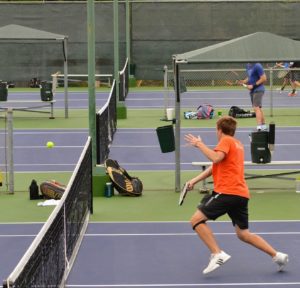
Here are our top 6 racquets for advanced players:
- Babolat Pure Drive – Best Overall Advanced Tennis Racquet
- Head Speed Pro 2024 – Most Balanced Racquet (used by Novak Djokovic)
- Wilson Blade 98 v9 – Best for Comfort (version of Serena William’s Racquet)
- Prince Textreme Tour 98 – Great Control, Comfort, & Spin
- Babolat Pure Aero Plus – Best for Power & Spin (version of Rafael Nadal’s Racquet)
- Wilson Pro Staff 97 v13 – Best for Control (version of Roger Federer’s Racquet)
Picking A Tennis Racquet Brand
The best tennis racquet brands on the market all have a wide variety of racquets for a wide range of players. For this reason, when considering what racquet is best for you, you’ll want to consider the size, weight, string pattern, and other factors, more than the brand.
The four leading tennis racquet brands are Wilson, Babolat, Head, and Prince. Diadem is a less common brand that is growing in popularity. We’ve reviewed most racquets from these brands below.
- Wilson racquet reviews
- Babolat racquet reviews
- Head racquet reviews
- Prince racquet reviews
- Yonex racquet reviews
- Diadem racquet reviews
Other less common brands include Dunlop and Gamma.
All eight of these brands have racquets for all types of players, and they each have multiple top professional tennis players who use and endorse their brand.
Stop paying full price for tennis gear! Get deals on shoes, racquets & more up to 70% off.
How To Choose a Women’s Tennis Racquet
Women tennis players typically have better control than men but do not generate as much power or spin. So in general, power and spin are most important when searching for the best tennis racquet for women.
For beginner adult women and teenagers, the Head TI S6 is our best pick. The Wilson Hyper Hammer is also a good option that provides a little extra mobility. These racquets are all lightweight, with a big sweet spot for comfort, and a large head size for power.
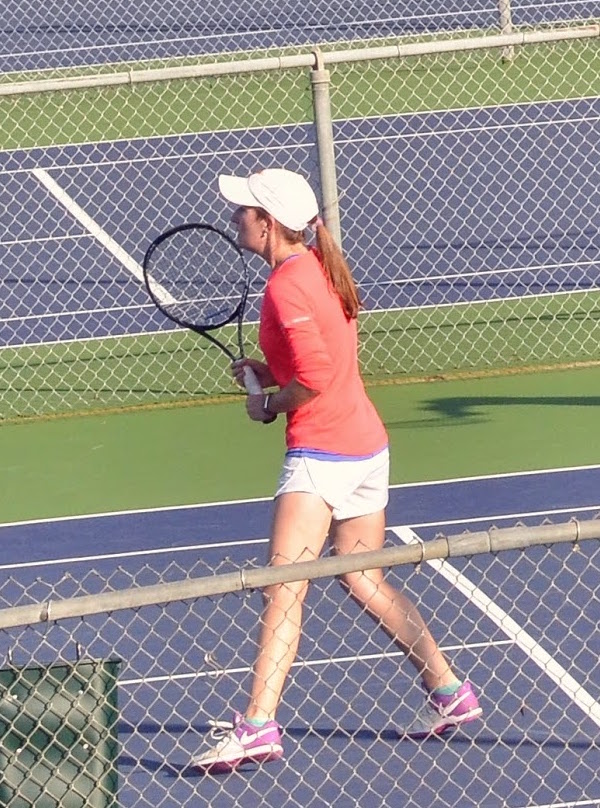
Intermediate and advanced women tennis players will need a racquet with more mobility and control, but one that doesn’t sacrifice power. For this type of player, Wilson makes the two best racquets on the market.
The new Clash 100 and the Wilson Blade (a version of Serena William’s racquet) are two great options. Read our Wilson Clash review and Wilson Blade review to learn more.
If you have a smaller budget, the Head Instinct MP is the next best choice.
How to Choose a Kid’s Tennis Racquet
When choosing a tennis racquet for your child you’ll want to pick something they can grow into. If your child is 6-12 years old, then they’re likely growing fast. The last thing you want is to buy them a racquet that they will outgrow in 1 year.
Here is a good sizing chart for kids under 12. If they’re above or below average height and strength for their age, then you’ll want to adjust accordingly.
| Child’s Age | Racquet Length |
|---|---|
| Under 5 Years Old | 19 Inch Racquet |
| 5 to 6 Years Old | 21 Inch Racquet |
| 7 to 8 Years Old | 23 Inch Racquet |
| 9 to 11 Years Old | 25 Inch Racquet |
If you’re unsure, then buy the bigger racquet so your child can grow into it.
For kids just starting out, the Wilson US Open tennis racquet is a great option. It comes in each size in the chart above.
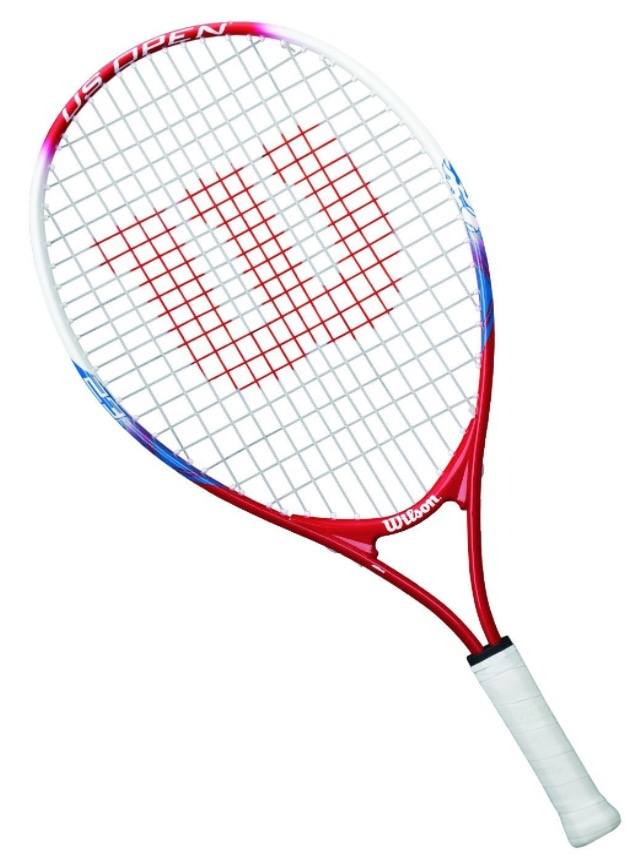
For children over 12, we recommend adult-sized racquets.
If your child is a beginner or is undersized for their age, buy the Wilson Hyper Hammer. These racquets are adult-sized but lightweight, making them the best choice for beginners in their teens.
For intermediate to advanced kids transitioning from a junior racquet, or stronger kids who don’t need as much help with power, look at the adult racquets from above. They will need a racquet that will allow them to continually develop their tennis game as they grow physically.
Conclusion: Making Sure You Choose The Right Tennis Racquet
Ultimately, the best way to make sure you choose the right racquet is to know your own game. If you know the type of player you are, and the type of player you want to be, you can be confident in choosing a tennis racquet that can support those strengths and weaknesses. Whether you want to be highly competitive, or just a recreational player, you should now know how to choose a tennis racquet.
